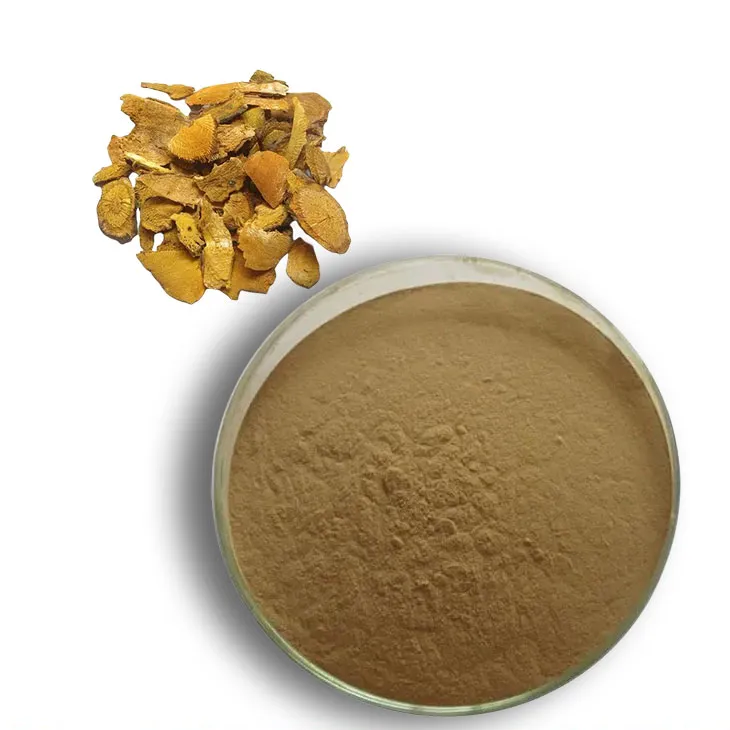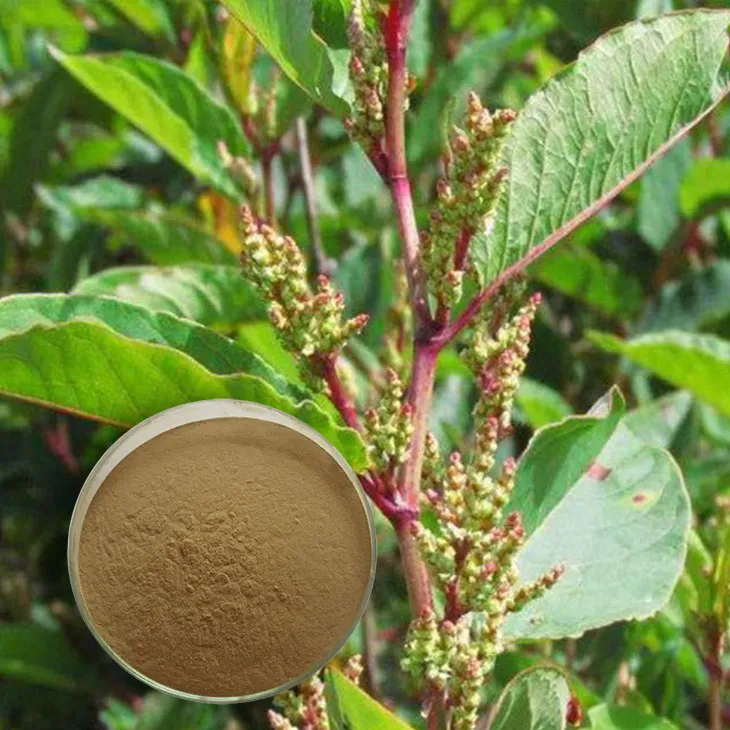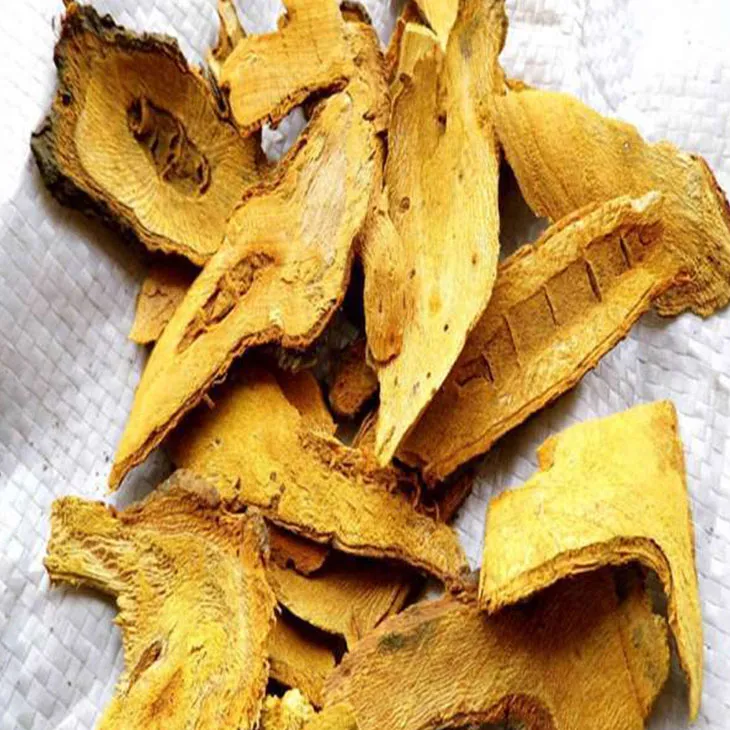- 0086-571-85302990
- sales@greenskybio.com
The process of extracting resveratrol from polygonum cuspidatum extract.
2024-11-27

1. Introduction
Resveratrol, a natural compound with numerous potential health benefits, has attracted significant attention in recent years. Polygonum cuspidatum, a plant rich in resveratrol, serves as an excellent source for its extraction. The extraction process of resveratrol from Polygonum cuspidatum extract is not only crucial for obtaining this valuable compound but also has far - reaching implications in various fields such as pharmaceuticals, cosmetics, and food supplements.

2. Selection of Raw Materials
2.1 Quality of Polygonum cuspidatum
- The quality of Polygonum cuspidatum used for extraction is of utmost importance. It should be sourced from reliable suppliers to ensure its authenticity and purity.
- The plant should be free from contaminants such as pesticides, heavy metals, and other harmful substances. This can be achieved through proper cultivation practices and quality control during harvesting and processing.
- Before the extraction of resveratrol, the Polygonum cuspidatum needs to be processed into an extract. This can be done through methods such as grinding the dried plant material into a fine powder.
- The powder can then be used for further extraction procedures. The preparation of the extract should be carried out under controlled conditions to preserve the integrity of the components present in the plant.

3. Determination of Extraction Conditions
3.1 Solvent Selection
- The choice of solvent is a critical factor in the extraction of resveratrol from Polygonum cuspidatum extract. Resveratrol is more soluble in certain organic solvents.
- Common solvents used for extraction include ethanol, methanol, and ethyl acetate. Ethanol is often preferred due to its relatively low toxicity and good solubility for resveratrol. For example, a high - purity ethanol solution can effectively dissolve resveratrol from the Polygonum cuspidatum extract.
- The extraction time also plays a significant role. Longer extraction times may lead to higher yields of resveratrol, but it may also increase the extraction of unwanted substances.
- Typical extraction times can range from a few hours to several days. For instance, in some experiments, an extraction time of 24 hours has been found to be effective in obtaining a reasonable amount of resveratrol while minimizing the extraction of impurities.
- Temperature affects the solubility and the rate of extraction. Higher temperatures generally increase the solubility of resveratrol in the solvent, thus potentially increasing the extraction yield.
- However, excessive heat can also cause degradation of resveratrol or other components in the Polygonum cuspidatum extract. A moderate temperature range, such as between 40 - 60°C, is often considered suitable for the extraction process.

4. Extraction Methods
4.1 Soxhlet Extraction
- The Soxhlet extraction method is a well - known and commonly used technique for extracting resveratrol from Polygonum cuspidatum extract.
- In this method, the Polygonum cuspidatum extract is placed in a Soxhlet apparatus, and the solvent is continuously refluxed through the sample. This allows for a more thorough extraction as the solvent is constantly renewed.
- However, the Soxhlet extraction method may be time - consuming and may require a relatively large amount of solvent.
- Maceration is a simple and traditional extraction method. In this process, the Polygonum cuspidatum extract is soaked in the solvent for a certain period of time.
- The mixture is usually stirred occasionally to enhance the contact between the solvent and the sample. Maceration is relatively easy to perform, but it may not be as efficient as some other methods in terms of extraction yield.
- Ultrasonic - assisted extraction utilizes ultrasonic waves to disrupt the cell walls of the Polygonum cuspidatum extract, thereby facilitating the release of resveratrol into the solvent.
- This method can significantly reduce the extraction time compared to traditional methods. It also has the potential to increase the extraction yield by improving the mass transfer between the sample and the solvent.
5. Purification of the Extract
5.1 Distillation
- After the extraction process, the extract contains not only resveratrol but also other substances. Distillation can be used as a purification method.
- In distillation, the extract is heated, and the components with different boiling points are separated. Resveratrol, which has a specific boiling point, can be separated from other substances with lower or higher boiling points.
- However, distillation may require specialized equipment and careful control of temperature and pressure to ensure accurate separation.
- Membrane separation is another purification option. Different membranes with specific pore sizes can be used to separate resveratrol from other components based on their molecular size.
- This method is relatively gentle and can preserve the activity of resveratrol. However, the selection of the appropriate membrane and the optimization of the separation conditions are crucial for effective purification.
- Chromatographic techniques such as high - performance liquid chromatography (HPLC) or column chromatography can be employed for the purification of resveratrol.
- In HPLC, the extract is passed through a column filled with a stationary phase, and the components are separated based on their different affinities for the stationary and mobile phases. This allows for the isolation of highly pure resveratrol.
- Column chromatography also operates on a similar principle, but it may be less precise and more time - consuming compared to HPLC.
6. Characterization and Quality Control
6.1 Spectroscopic Analysis
- Once the resveratrol has been purified, it is necessary to characterize it to ensure its identity and purity. Spectroscopic techniques such as ultraviolet - visible (UV - Vis) spectroscopy, infrared (IR) spectroscopy, and nuclear magnetic resonance (NMR) spectroscopy can be used.
- UV - Vis spectroscopy can provide information about the absorption characteristics of resveratrol, which can be used to confirm its presence and estimate its concentration. IR spectroscopy can identify the functional groups present in resveratrol, while NMR spectroscopy can provide detailed structural information.
- Quality control is essential to ensure the safety and effectiveness of the extracted resveratrol. Parameters such as purity, which should be determined by methods like HPLC, need to be within the specified limits.
- Other factors such as the presence of residual solvents, heavy metals, and microbial contamination also need to be monitored. Residual solvents should be within the acceptable levels set by regulatory authorities to ensure the safety of the product.
7. Applications of Resveratrol
7.1 Pharmaceutical Research
- The pure resveratrol obtained from Polygonum cuspidatum extract has great value in pharmaceutical research. It may possess antioxidant, anti - inflammatory, and other pharmacological activities.
- Antioxidant properties of resveratrol can help in protecting cells from oxidative damage, which is associated with various diseases such as cancer, cardiovascular diseases, and neurodegenerative disorders.
- Its anti - inflammatory activity can be beneficial in treating inflammatory conditions such as arthritis and inflammatory bowel diseases.
- In the cosmetic industry, resveratrol is used for its anti - aging properties. It can help in reducing wrinkles, improving skin elasticity, and protecting the skin from environmental damage.
- Resveratrol - containing cosmetics are becoming increasingly popular as consumers are more aware of the benefits of natural ingredients for skin health.
- Resveratrol can also be used as a food supplement. It is believed to have potential health - promoting effects when consumed regularly.
- However, proper dosage and safety considerations need to be taken into account when formulating resveratrol - based food supplements.
8. Conclusion
The extraction of resveratrol from Polygonum cuspidatum extract is a complex but rewarding process. Through careful selection of raw materials, determination of extraction conditions, use of appropriate extraction and purification methods, and strict quality control, high - quality resveratrol can be obtained. The applications of resveratrol in pharmaceuticals, cosmetics, and food supplements make it a highly valuable compound, and further research on its extraction and utilization is expected to bring more benefits in the future.
FAQ:
What are the common solvents used in the extraction of resveratrol from Polygonum Cuspidatum Extract?
Common solvents include ethanol, methanol, etc. These solvents are often chosen because resveratrol has relatively good solubility in them, which helps in effectively extracting resveratrol from the Polygonum Cuspidatum Extract.
How does extraction time affect the extraction of resveratrol?
If the extraction time is too short, resveratrol may not be fully extracted from the polygonum cuspidatum extract. However, if the extraction time is overly long, it may lead to the extraction of more impurities along with resveratrol. So, an appropriate extraction time needs to be determined through experiments to achieve a balance between extraction efficiency and purity.
What is the role of temperature in the extraction process?
Temperature can influence the solubility of resveratrol in the solvent and the rate of extraction. Higher temperatures may generally increase the solubility and extraction rate to a certain extent, but excessive heat can also cause the degradation of resveratrol or the extraction of more unwanted substances. Therefore, the optimal temperature should be carefully selected.
Why is purification necessary after extraction?
After extraction, the extract contains not only resveratrol but also other substances. Purification is necessary to obtain pure resveratrol. Pure resveratrol is required for accurate pharmacological research and potential pharmaceutical applications, as the presence of impurities may interfere with the study of its pharmacological activities and its safety and efficacy in pharmaceutical use.
What are the advantages of resveratrol in pharmaceutical research?
Resveratrol may possess antioxidant, anti - inflammatory and other pharmacological activities. These properties make it a potential candidate for the development of drugs for treating various diseases related to oxidative stress and inflammation, and also for preventive medicine in some cases.
Related literature
- Optimization of Resveratrol extraction from Polygonum cuspidatum: A Review"
- "Resveratrol from Polygonum cuspidatum: Extraction, Purification and Pharmacological Activities"
- ▶ Hesperidin
- ▶ citrus bioflavonoids
- ▶ plant extract
- ▶ lycopene
- ▶ Diosmin
- ▶ Grape seed extract
- ▶ Sea buckthorn Juice Powder
- ▶ Beetroot powder
- ▶ Hops Extract
- ▶ Artichoke Extract
- ▶ Reishi mushroom extract
- ▶ Astaxanthin
- ▶ Green Tea Extract
- ▶ Curcumin Extract
- ▶ Horse Chestnut Extract
- ▶ Other Problems
- ▶ Boswellia Serrata Extract
- ▶ Resveratrol Extract
- ▶ Marigold Extract
- ▶ Grape Leaf Extract
- ▶ blog3
- ▶ blog4
-
Certified organic propolis extract powder.
2024-11-27
-
How to make powder with lemon extract.
2024-11-27
-
Certified organic aged garlic extract.
2024-11-27
-
Active components in yam extract.
2024-11-27
-
Cocoa Extract
2024-11-27
-
Boswellia Serrata Extract
2024-11-27
-
Polygonum multiflorum extract
2024-11-27
-
Diosmin
2024-11-27
-
Shikonin
2024-11-27
-
Green coffee bean Extract
2024-11-27
-
Soy Extract
2024-11-27
-
Lily extract
2024-11-27
-
Jujube Extract
2024-11-27
-
Nettle leaf extract
2024-11-27





















